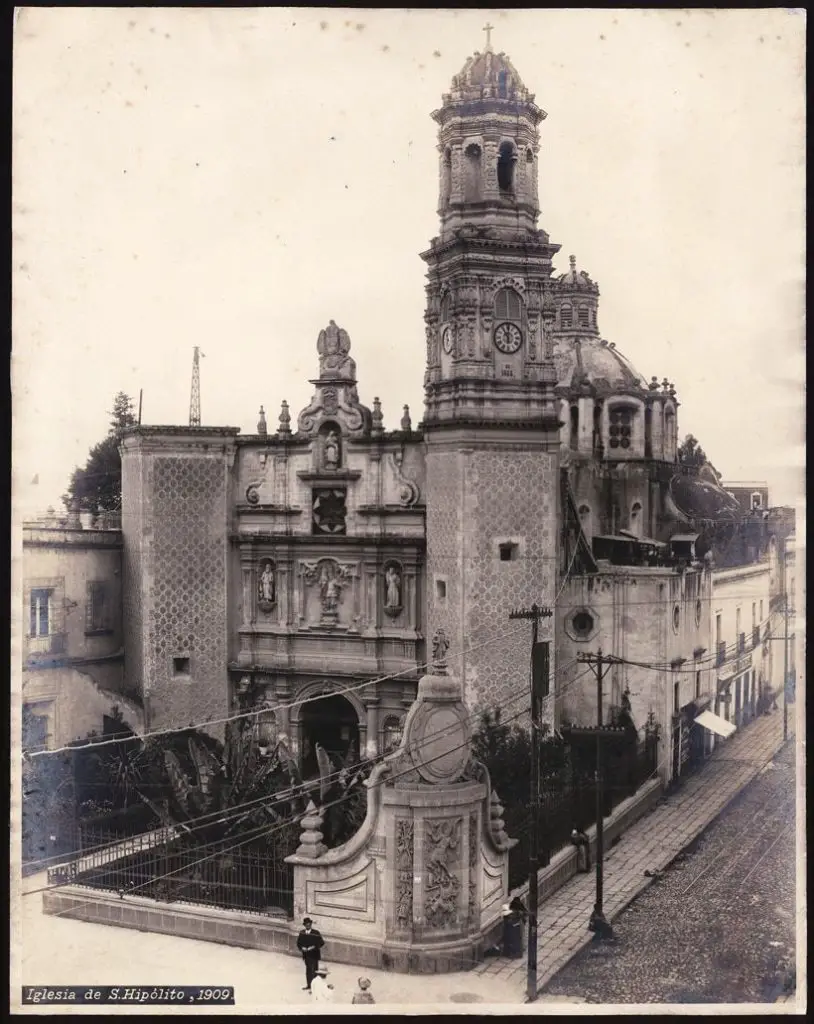Saint Hippolytus was a famous writer of the 2nd century. He is one of the most discussed saints because there is little information about him, but he was a priest of the Roman Church who died a martyr’s death. He became an important figure in the Roman Church.

History and biography of Saint Hippolytus
The exact place and date of St Hippolytus’ birth is unknown, but it is thought to have been in the second half of the 2nd century. It is said that he was of Eastern origin, as his writings were in the Greek language. He was the last Christian writer in Rome to use this language. He was a very learned man, with a great knowledge of Greek philosophy and mysteries. He was highly respected among Christians for his intelligence. He was committed to fighting the ideals of philosophy and to placing faith above all reason.
There is reason to believe that Hippolytus was not a native of Rome, he had extensive knowledge of Greek philosophy, its origins and its mysteries, so it is thought that he may have come from the East. His theological attitude shows that his education was closely linked to Alexandria.

There are several versions of the life of Saint Hippolytus, one tells of the writer and first antipope in history, while the other tells of a jailer who became a saint. It is not possible to know exactly what the life of Saint Hippolytus was like, since this saint lived in ancient times and there is no precise information about his history, but he is known as one of the martyrs of the Church.
It is said that St Hippolytus was a disciple of St Irenaeus and was described by St Jerome as “a very holy and eloquent man”. St Hippolytus was a jailer who was assigned to guard a group of Christian prisoners, including St Lawrence. Hippolytus professed his faith and devotion to God, the Virgin Mary and the Church.
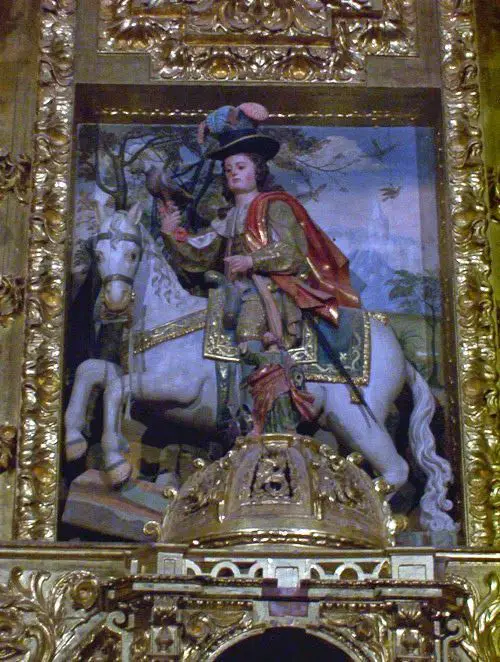 The Christians he protected were martyred, as was St Lawrence, and Hippolytus attended his funeral, which was discovered by his superiors, who condemned him to a cruel death, being thrown from four wild horses to which they tied him and dragged him back and forth. He died a martyr’s death. The remains of St Hippolytus were buried in the cemetery on the Via Tiburtina in Rome, Italy. It still bears his name.
The Christians he protected were martyred, as was St Lawrence, and Hippolytus attended his funeral, which was discovered by his superiors, who condemned him to a cruel death, being thrown from four wild horses to which they tied him and dragged him back and forth. He died a martyr’s death. The remains of St Hippolytus were buried in the cemetery on the Via Tiburtina in Rome, Italy. It still bears his name.
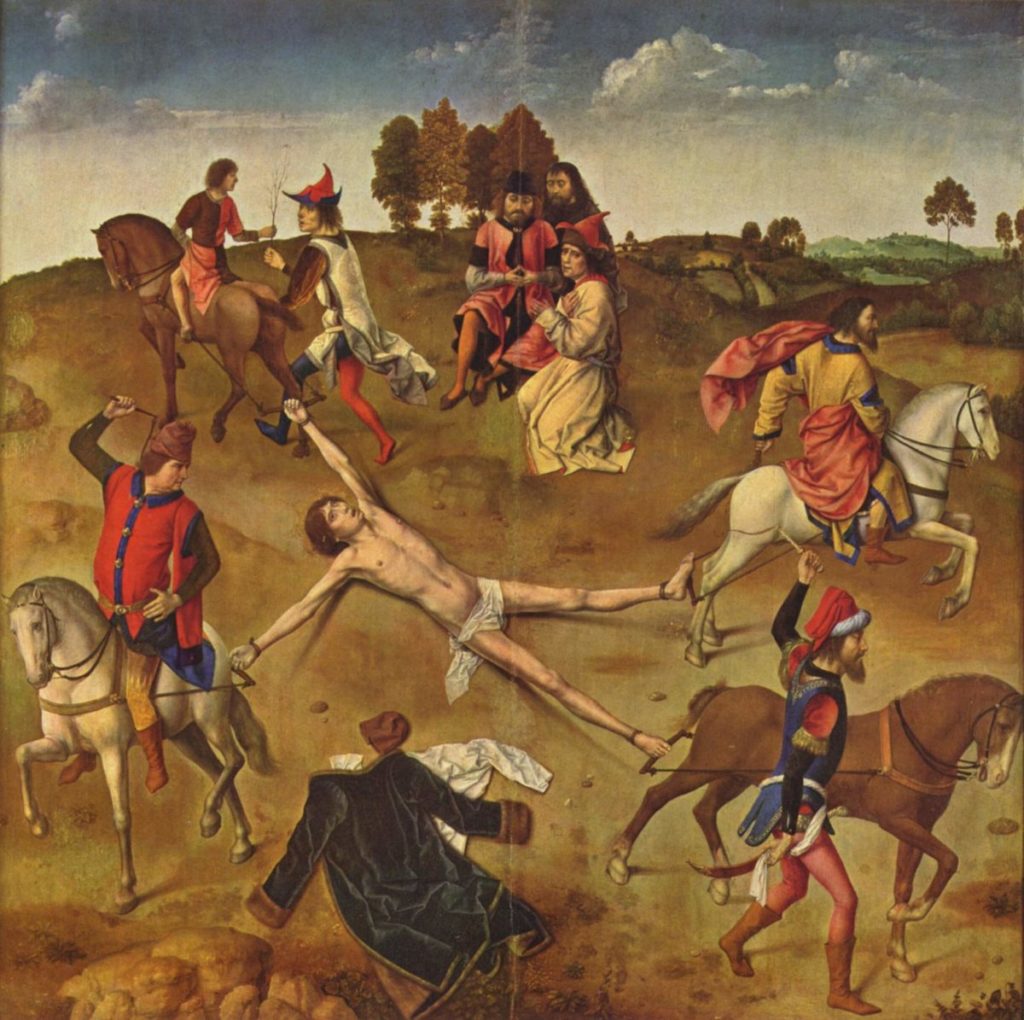
This is just one version of the life of Saint Hippolytus, which is one of the most controversial in history. Although there are several material, liturgical and archaeological sources that testify to this saint, none of them can be considered completely true. It is said that Hippolytus was in direct conflict with Pope Callixtus I, disagreeing with his election as pope.
He felt that it was a departure from the tradition of the early Church to soften the discipline for penitents who had been guilty of mortal sin. In addition, Callixtus I wanted to allow former members who had been expelled for serious offences to rejoin the Church, was more condescending towards human weakness, and was willing to grant the forgiveness that Jesus Christ granted for every kind of sin.
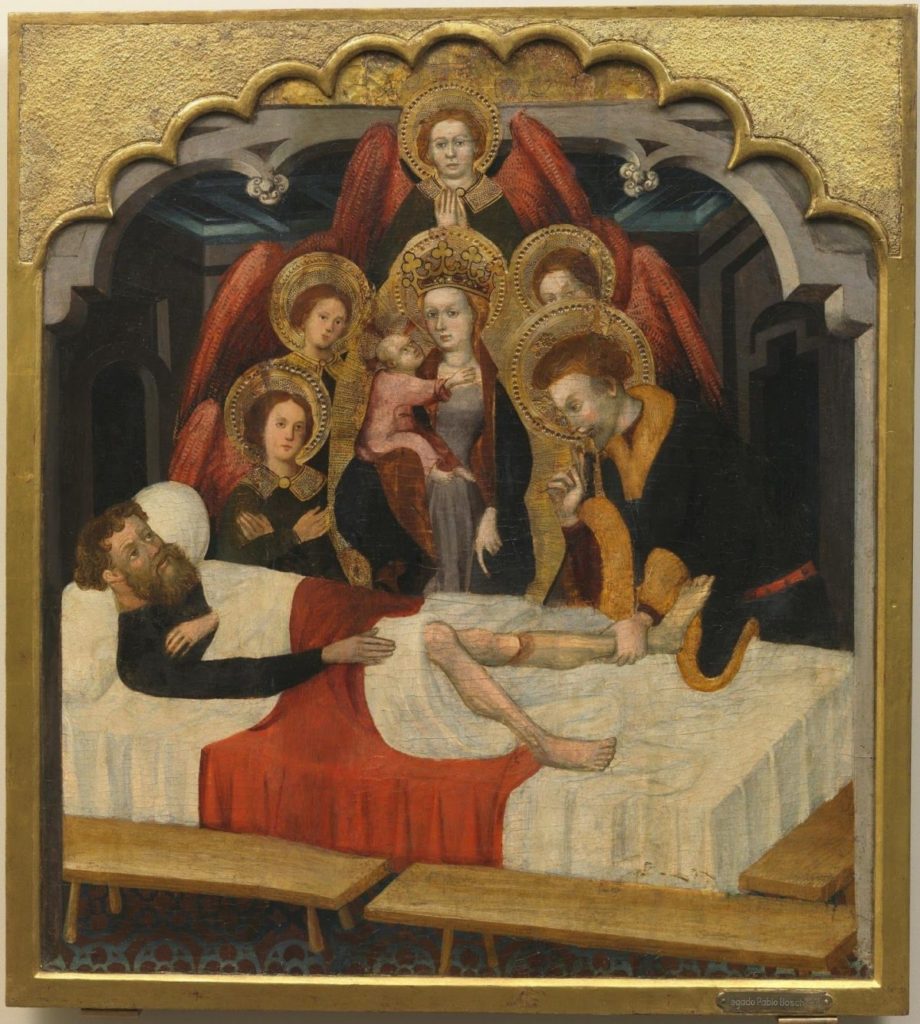
The Pope relaxed the penitential rules for the most serious sins, which Hippolytus did not agree with, nor did he want to give a complete picture of the origin of the Logos, being more rigorous in the penitential discipline, and accused Callixtus of being a modalist. This term means that he believed in the existence of one God who manifested himself as Jesus Christ for the salvation of mankind.
Hippolytus therefore decided to withdraw from the Roman Church for about ten years and lead a separate congregation of a dissident group, which, although small, was very influential. He was elected Bishop of Rome by them, making him the first Antipope in history. The doctrine states that an antipope is a person who assumes, or pretends to assume, and exercises the functions and powers of the legitimately elected Pope of the Catholic Church.
Hippolytus opposed the Supreme Pontiff and continued his reign of opposition during two more pontificates, that of Urban I (222-230), the successor of Callistus I, and later of Pontianus (230-235), under whom Hippolytus continued his schismatic attitude. Then, in 235, during the persecution of the Christians by the Thracian emperor Maximinus, St. Hippolytus and St. Pontian, who was the legitimate pope at the time, were exiled to Sardinia (See: Why the early Christians were persecuted).
St Pontian resigned as bishop on 12 September 235 to allow the Romans to elect his successor. St Hippolytus did the same, reconciled with the Catholic Church and asked his followers to rejoin the Roman Church. St Antherus (235-236) was elected Pope, marking the culmination of the schism that existed in the Catholic Church at that time.
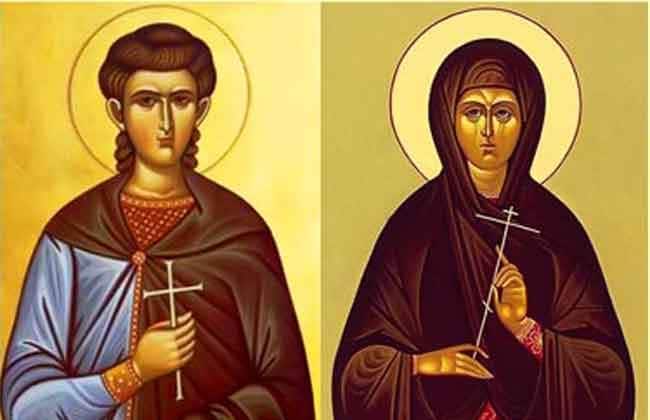
During their exile, St. Hippolytus and St. Pontianus forgot their differences, it is said that they were ill-treated on the island, and they both died in the same year as martyrs of the Church. Their bodies were brought to Rome by Pope St Fabian (236-250), who had them solemnly buried on 13 August 236.
St Pontian was buried in the papal crypt of St Callixtus, while Hippolytus was buried in the cemetery on the Via Tiburtina, which still bears his name. This is not entirely certain, since the author of the Liber Pontificalis speaks of Saint Fabian transferring the body of Saint Pontian, but does not mention Saint Hippolytus at any time, so it is not certain that he died at that time.
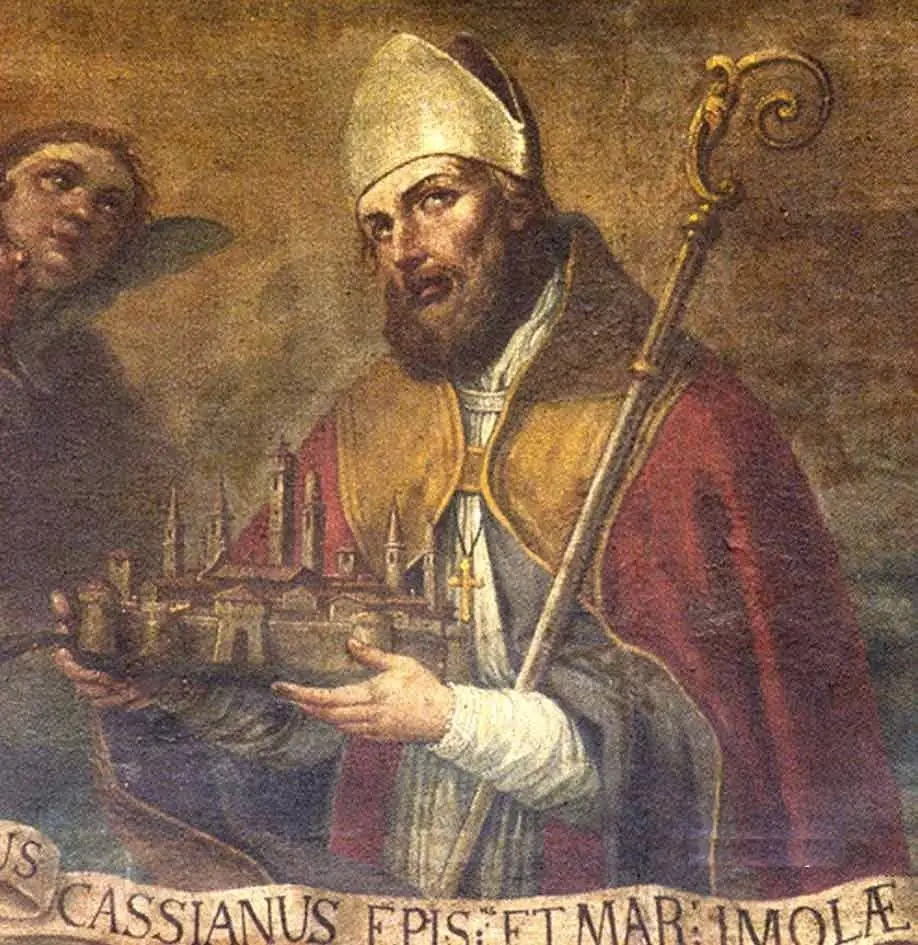
The figure of Saint Hippolytus is very complex; he is portrayed as a writer, a bishop, a jailer and an antipope, without knowing for sure which is the real one. Some people argue that perhaps the jailer Hippolytus was not the same as the antipope Hippolytus, i.e. there is a possibility that they were two different people with the same name. However, there are other stories of St Hippolytus that link the jailer with the bishop.
What is important here is that Hippolytus, whatever different historians may say, was a martyr of the Roman Church who became a saint and has been venerated since antiquity.
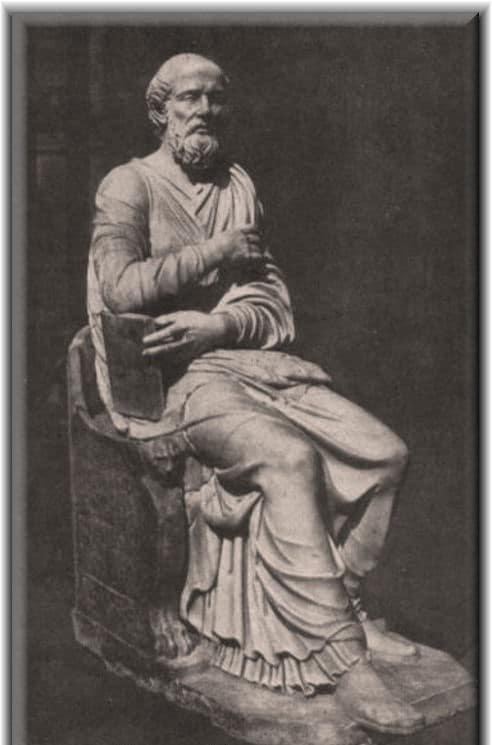
In 1551, in the middle of the 16th century, a marble statue of Saint Hippolytus was discovered in the cemetery on Via Tiburtina, representing him seated on a cathedra. From its characteristics it seems to have been made in the 3rd century, shortly after his death. All his works are inscribed on the chair on which Saint Hippolytus sits. The sculpture is now in the Lateran Museum in Rome, Italy.
Church of Saint Hippolytus
The Church of Saint Hippolytus is located in the centre of Mexico City. For three hundred years it was the only church with a shrine to Saint Hippolytus. It has become a place of pilgrimage for all Catholics. It is also known as the Church of Saint Jude Thaddeus, known as the patron saint of difficult and desperate causes, as his devotees go there to worship him. The temple was built on 13 August 1521, the feast day of Saint Hippolytus.
The construction of the church of San Hipolito began in 1599 and was completed in 1740. The history of this church is very interesting, as the place where it stands was the site of a battle with the Aztecs, which resulted in many deaths. The church is the site of the so-called “Noche Triste” (Sad Night) where the Spaniards were defeated by the Mexica.
Mexico-Tenochtitlan was conquered on the 13th of August, the feast day of Saint Hippolytus, and in 1599 it was ordered to be built and named after him in honour of the fallen. San Hipólito was also declared the patron saint of Mexico City by order of Cortés and the Catholic Church.
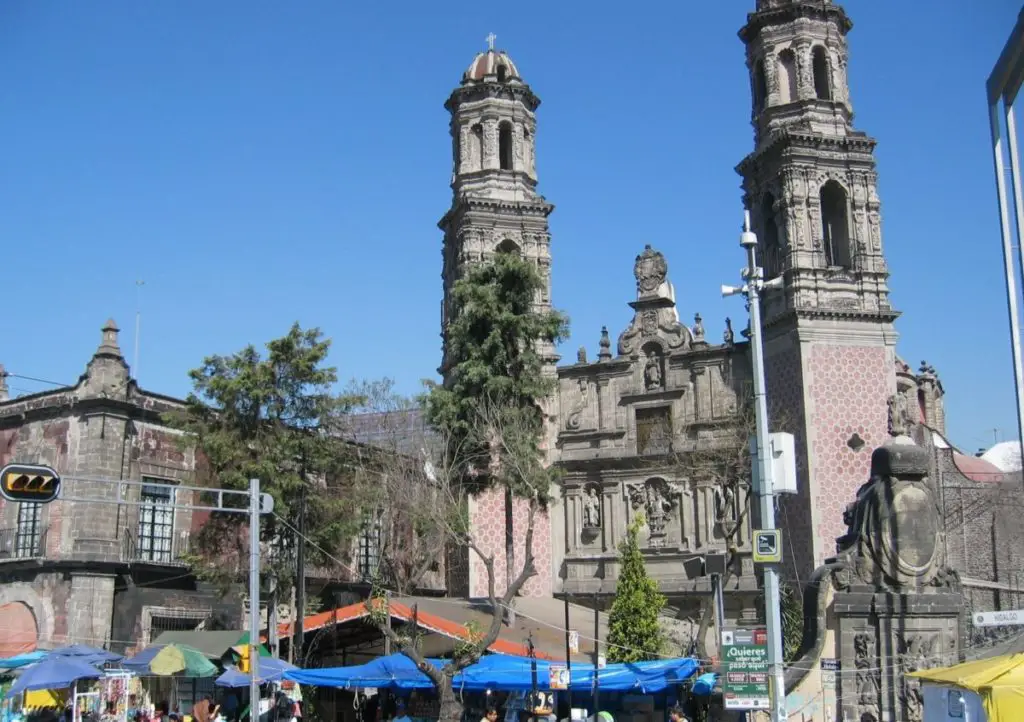
The sculpture of the temple is baroque and neoclassical and has been rebuilt several times. In the chapel, there is a monument depicting an Indian being lifted by an eagle carrying him in its talons. It represents the legend of the Labrador and is a monument in honour of the fallen Spaniards, made by the architect José Damián Ortiz.
The façade of the church has three sections: the first is the main entrance to the temple, which has two columns turned at 45°. The second is where Saint Hippolytus is located, and on its sides there are two images, one of Saint Anthony of Padua and the other of Saint Anthony the Abbot. There is also an image of the Virgin Mary on the high altar.
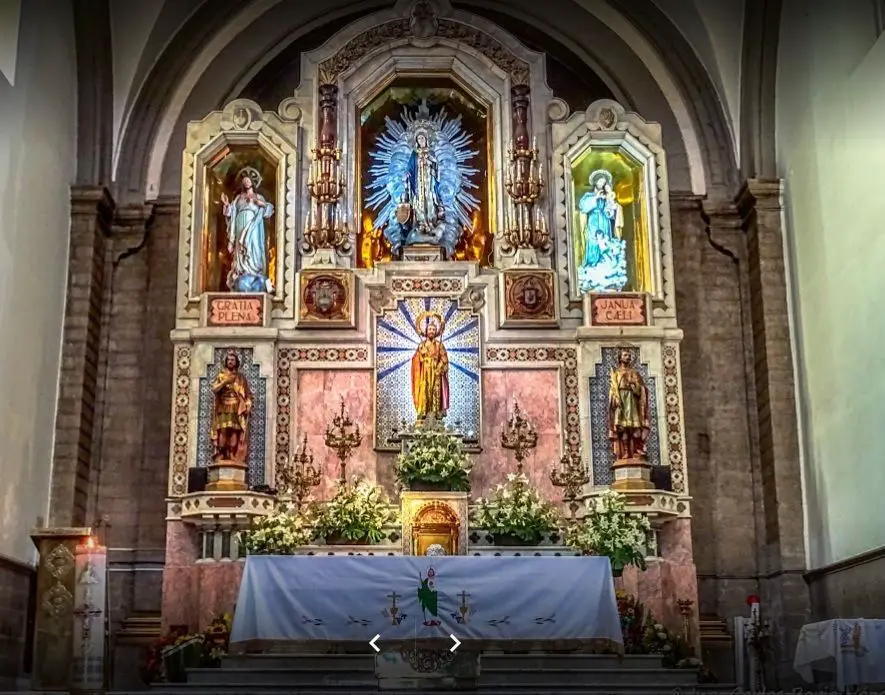
In 1982, an image of St. Jude Thaddeus was placed on the main altar, which is why it is also known as the Church or Temple of St. Jude Thaddeus, the saint of lost cases, very popular and venerated by Mexicans.
Every year thousands of parishioners visit this church to worship their saint. This is one of the few churches that allows access to people with drug problems and those in trouble with the law. It is located in the Cuauhtémoc district of Mexico City, known as one of the places with the highest crime rate in the country.
Due to its location, most of the people who attend are poor, marginalised, impoverished, delinquent and, above all, young people between the ages of thirteen and twenty. Many of the faithful carry candles and red and white roses, and many wear white and green tunics, the saint’s colours, for the celebrations on the 28th of each month.
The church of San Hipolito is the main place of worship of San Judas Tadeo, and every year on the 28th of October thousands of people go there to worship him. Masses are celebrated in honour of this saint and the celebrations begin the night before, when the faithful arrive and stay in Hidalgo Avenue, which is closed for the occasion. As the crowds arrive, they also occupy Paseo de la Reforma, one of the city’s main thoroughfares.

Most of the faithful walk from their homes to the church, and those who don’t use public transport, motorcycles or bicycles. There are also hundreds of pilgrims from different cities such as Toluca, Puebla, Morelos, Mexico City, among others. The influx of people is so great that every year a police operation is set up to protect them and also to control the difficult traffic that is generated as a result of this celebration.
All year round the church is full of people selling candles, images, rosaries, shirts and other religious items. On the 28th they sell around 2,000 statues of St Jude Thaddeus to visitors, which are blessed during the celebration.
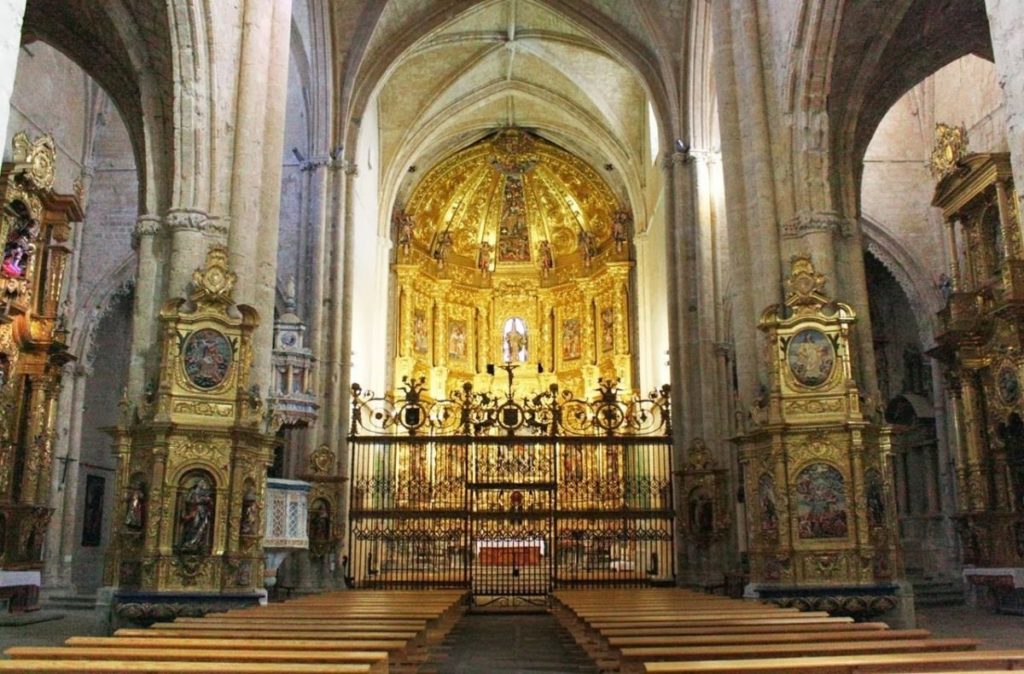
Despite the fact that the temple is dedicated to San Hipólito, over time the same neighbours of the town, as well as people with scarce resources, began to worship San Judas Tadeo, “the saint of impossible cases”, in this place, celebrating a fiesta in his honour on the 28th of every month. The faithful come either out of devotion, to ask him for help with unemployment and economic problems, or simply to thank the holy apostle for the miracles or favours he has granted them.
It is worth mentioning that the church of San Hipolito is the second most visited temple in the city, after the Basilica of the Virgin of Guadalupe.
Works of St. Hippolyte
 The works of Saint Hippolytus, with which he enriched the theological field throughout his life, are numerous and extensive, but very few of them have survived in their original Greek text. This may be due to the fact that, after his death, knowledge of the Greek language gradually died out in Rome. Today, only fragmentary remains of his original works remain, but the information and knowledge they contain have been of great importance to Christianity.
The works of Saint Hippolytus, with which he enriched the theological field throughout his life, are numerous and extensive, but very few of them have survived in their original Greek text. This may be due to the fact that, after his death, knowledge of the Greek language gradually died out in Rome. Today, only fragmentary remains of his original works remain, but the information and knowledge they contain have been of great importance to Christianity.
Philosophumena
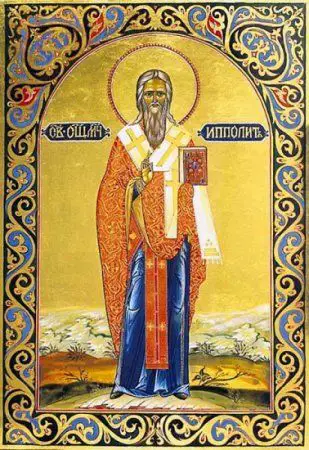
The ‘Philosophumena’ was originally thought to be the work of St Hippolytus, as it was closely related to the Easter Canon written on the statue of St Hippolytus. Its author, however, was a certain Josippus, who is still unknown, but to whom other works are attributed, such as the treatise On the Universe and the Elenchos.
The Philosophumena is a series of ten books, the first part of which deals with the philosophy of the Greeks, and the second is a refutation of all heresies, the purpose of which is to show that the heresies are not Christian, but are based on a pagan philosophy alien to Christianity. It is thought to have been written around 222.
The Apostolic Tradition
This is the work of Hippolytus that has been of most interest in the 20th century, as it is one of the most important ecclesiastical constitutions of antiquity. It deals with the consecration of bishops, deacons, priests and other orders. It explains the rules of Christians concerning fasting, prayer and professional activity.
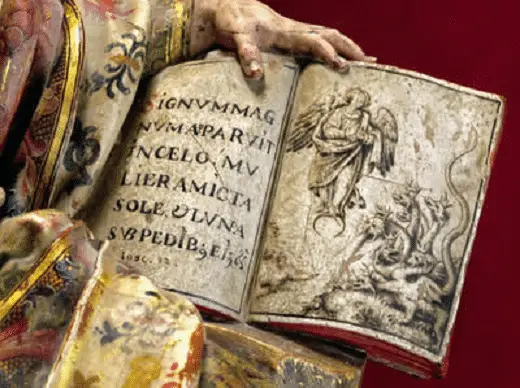
Written in 215, it also described the different degrees of hierarchy for baptism, the sacraments and above all the Eucharist, in which he proposed several innovations for the Christian Church, providing a new basis for the history of the Roman liturgy.
The Antichrist
Written in the year 200, the Greek text is still extant, it is one of the most important works of Saint Hippolytus. It was based on the prophecies of Daniel. He considered Rome to be the kingdom of the Antichrist, that is, a figure who would fulfil the biblical prophecies concerning Christ’s adversary; but in his work he states that this would come later.
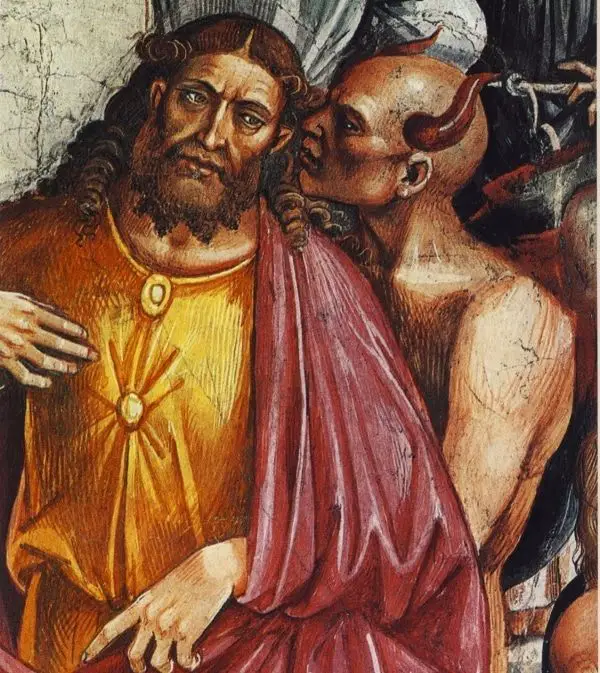 The authenticity of this scripture is well established, and it describes the glorious and heavenly reign of the saints who do this with Christ, and the punishment of the guilty.
The authenticity of this scripture is well established, and it describes the glorious and heavenly reign of the saints who do this with Christ, and the punishment of the guilty.
The Chronicle
This is the chronicle of the history of the world written by Hippolytus, covering the period from the creation of the world to the date on which he wrote it. It was written to allay the fears of people who thought that the Millennium and the Last Judgement were imminent. Its main source was the Bible.
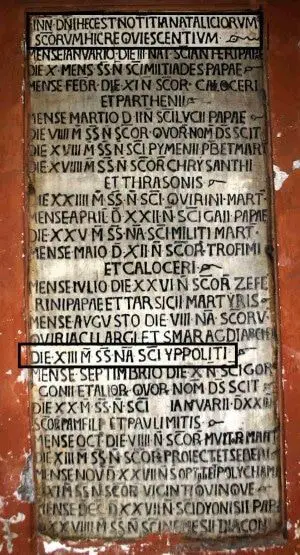
At the time of writing, Hippolytus proved in three different ways that at the time of writing his chronicle only five thousand seven hundred and thirty-eight years had passed since the creation of the world. Since the Scriptures said that the world would last six thousand years, Hippolytus proved that its end was far off.
On the Resurrection
One of the lost works of St Hippolytus, the list of works found on the chair of the saint’s statue, mentions a treatise on God and the resurrection of the flesh. It was St Jerome who claimed that the Resurrection was written by Hippolytus. This work gives all the answers to the doctrine of the resurrection which the Empress Mamea had made. Even today, Theodoret of Cyrus preserves two fragments of the original Greek of this work.
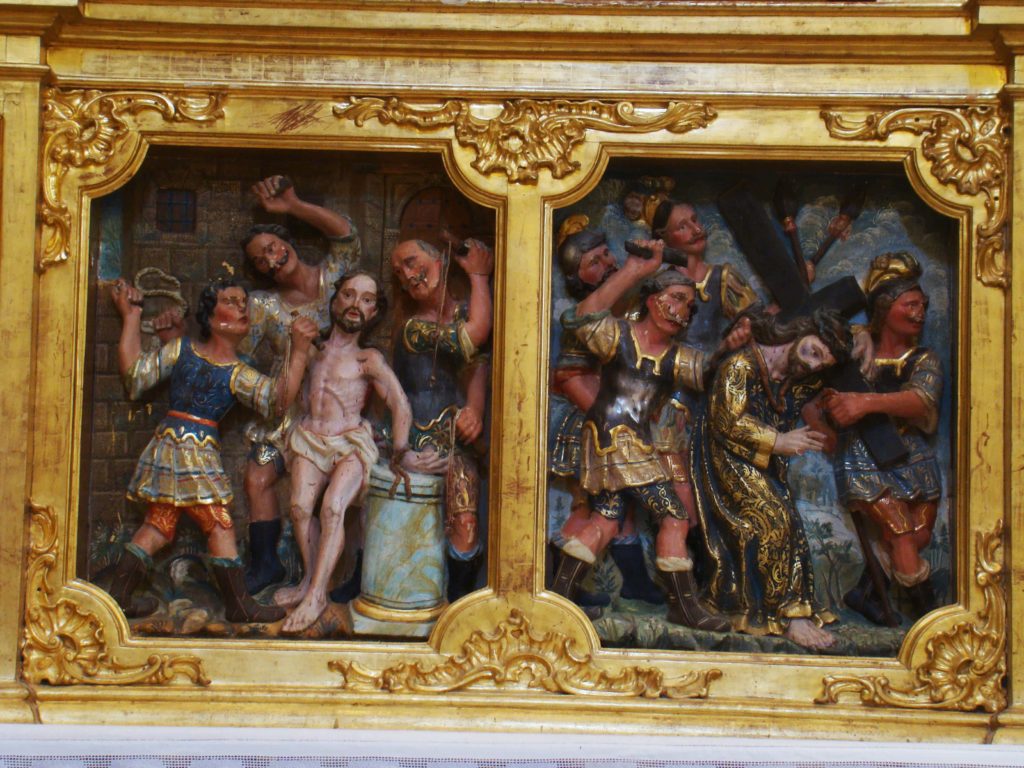
The Muratorian Fragment
The Muratorian Fragment is a document attributed to Hippolytus that contains the earliest writings of the New Testament. It was discovered in 1740 and is of great importance in the history of the canon. It contains references to the Book of Wisdom, the Gospel of John and the Shepherd of Hermas, among others.
The structure and connection of the sentences are in Greek, but some historians and theologians doubt that it was written by St Hippolytus, but for lack of concrete evidence it cannot be attributed with certainty to a specific author.
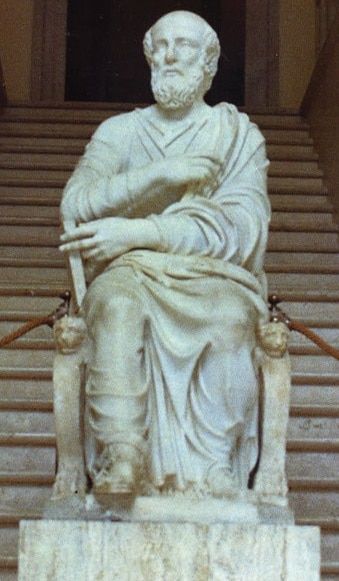
These are just some of the works of St Hippolytus, who, despite his extensive literary output, was unable to produce a complete theological system. Most of his works were on chronology and canon law.
Although many of them are fragmentary and difficult to understand, the works of St Hippolytus are of great importance for literature and theology. His Chronicles have served as the basis for many works, and certain elements have been taken from them in the great compilations of canon law.
Prayer to Saint Hippolytus
Saint Hippolytus always believed in the power of prayer; it is the best way to communicate with God and the saints. It also alleviates anxiety and gives hope and trust in the Lord’s will. In The Apostolic Tradition, St Hippolytus writes: “At the crowing of the cock, at dawn, when you get up, pray too”, which also refers to the birth of Christ.
Hippolytus speaks of praising God at all times, not only in times of need, but always knowing how to be grateful for the Lord’s blessings. The moment of prayer is when one kneels before God and praises him. In the early morning, when hope shines, it is time to pray, just as in the night, when everything becomes dark and impossible, it is time to pray.
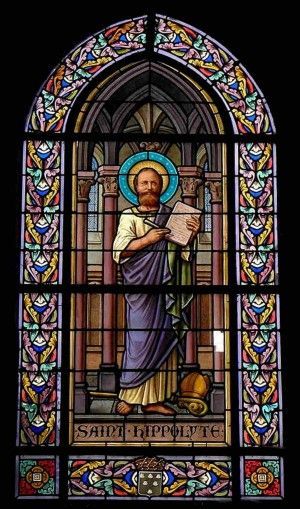
The world does not need the birth of Christ, so let us pray every day. Then return to rest, for the soul is at rest, for that is what prayer is. Hippolytus wrote that “the stars, the trees and the waters stand still for a moment, and all the choirs of angels who serve God praise Him in that hour with the righteous”.
In Part I of the Apostolic Tradition I find: “The Lord be with you and with your spirit. And with your Spirit lift up your hearts! We have turned them to the Lord. Let us give thanks to the Lord. It is right and just. We thank you, O God,” then Hippolytus speaks of God sending them as saviours, redeemers and messengers of his will.

It refers to the fact that he took him into the womb of the Virgin Mary, to whom, having been conceived, he revealed himself as her Son, born of the Holy Spirit. “He acquired a holy people by stretching out his hand to save from suffering those who believe in you”. In his works, Saint Hippolytus wrote part of the Eucharistic prayers that have been used ever since.
In his refutation of all heresies, Saint Hippolytus states that Christ is the God above all things, who, determined to eradicate the sin of mankind, created them from the beginning and made them in his own image. In this way he showed his love for them and gave them the Ten Commandments so that by fulfilling them they would enjoy eternal glory.
Saint Hippolytus Day
The 13th of August each year is celebrated as St Hippolytus’ Day, as this is the day on which he was buried as a Christian in the cemetery on the Via Tiburtina in Rome, Italy, in the year 235. The facts about him are obscure and confusing, and over the years he has become one of the most discussed saints in history. He was the author of works of great importance to the Church and canon law. He became one of the most important figures of Christian antiquity.
His knowledge and intelligence helped to create and popularise much of what we know today about Christianity. He also became the patron saint of horses, as did St Anthony of Padua. St Hippolytus is a Roman saint, venerated since ancient times, who died as a martyr for the Church. His followers celebrate his feast day every year on 13 August, worshipping him and praising him for his miracles and intercession before God and the Virgin Mary.
Prayer to the martyr Hippolytus
Since ancient times, the devotees of Saint Hippolytus have worshipped him and prayed to him, either to ask for something or to thank him for his miracles. The faithful used to go to the statue of the saint to pray to him and on 13 August, which was his day, they would go to the statue as a sign of gratitude.
“St Hippolytus, I turn to you to intercede for me before God, the Almighty and Eternal Father. I ask you to help me (say what you want to ask), you who were a priest, lived for Christ and defended faith above all reason, I ask you to accompany me on this journey and to protect me from all evil, you who died as a martyr but lived as a saint, grant us the grace to serve you with your faith. Through Jesus Christ, your Lord and our Lord. Amen.
